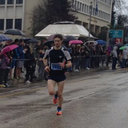Pathophysiology of Noncardiac Syncope in Athletes.
Keywords
Abstract
The most frequent cause of syncope in young athletes is noncardiac etiology. The mechanism of noncardiac syncope (NCS) in young athletes is neurally-mediated (reflex). NCS in athletes usually occurs either as orthostasis-induced, due to a gravity-mediated reduced venous return to the heart, or in the context of exercise. Exercise-related NCS typically occurs after the cessation of an exercise bout, while syncope occurring during exercise is highly indicative of the existence of a cardiac disorder. Postexercise NCS appears to result from hypotension due to impaired postexercise vasoconstriction, as well as from hypocapnia. The mechanisms of postexercise hypotension can be divided into obligatory (which are always present and include sympathoinhibition, histaminergic vasodilation, and downregulation of cardiovagal baroreflex) and situational (which include dehydration, hyperthermia and gravitational stress). Regarding postexercise hypocapnia, both hyperventilation during recovery from exercise and orthostasis-induced hypocapnia when recovery occurs in an upright posture can produce postexercise cerebral vasoconstriction. Athletes have been shown to exhibit differential orthostatic responses compared with nonathletes, involving augmented stroke volume and increased peripheral vasodilation in the former, with possibly lower propensity to orthostatic intolerance.


